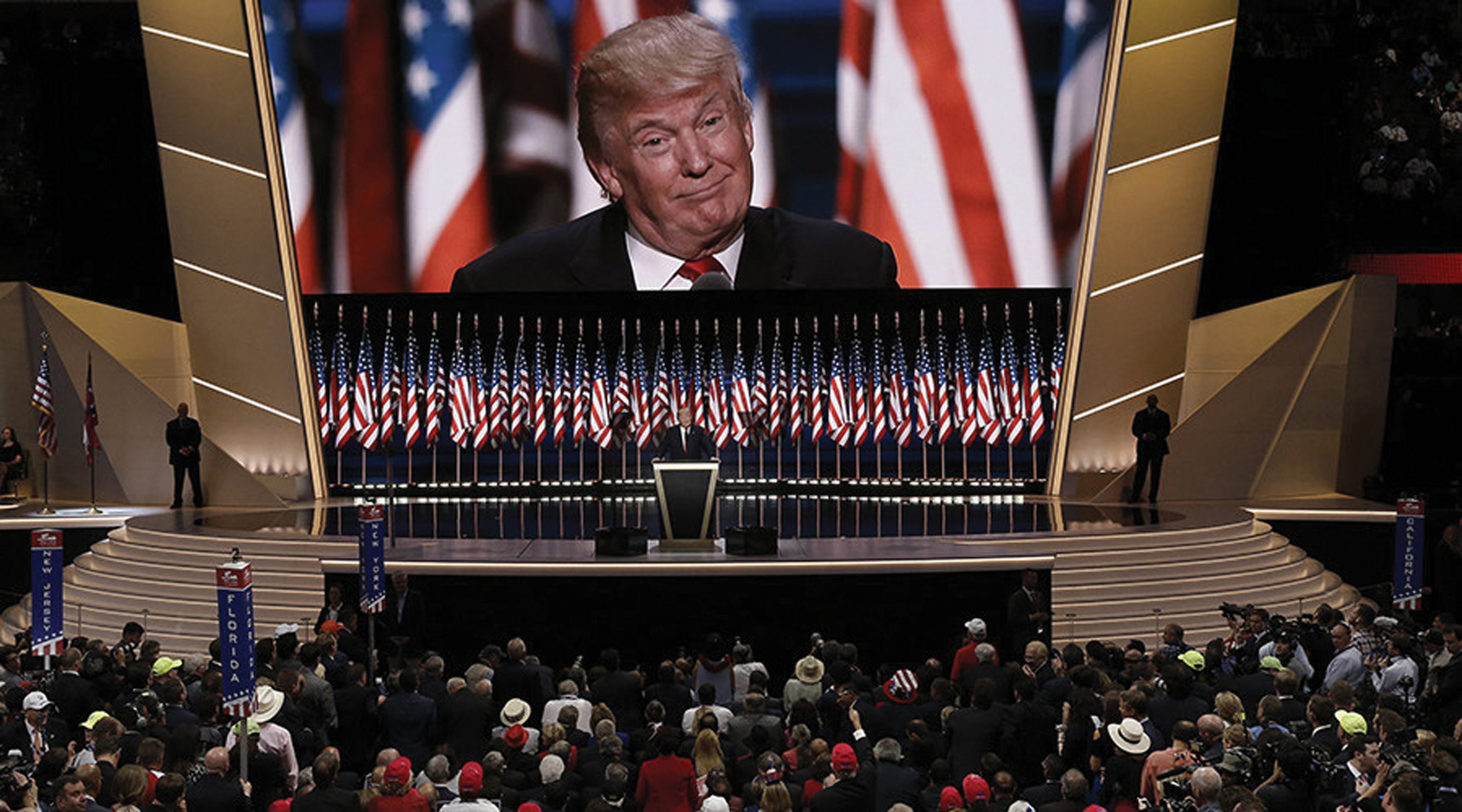I don’t pay attention to awards shows. At most, I check who’s won on Twitter with mild curiosity or wait for the inevitable red carpet roundup slideshows to populate various fashion websites. As a casual consumer of movies, music and television, it’s hard to feel personally invested in the race to the top.
It was impossible, however, to ignore this year’s Academy Awards. For the second year running, the nominees for the four main acting awards were all white. It didn’t take long for observers, both from mainstream media outlets and social media, to comment on the blatant lack of diversity. A firestorm ensued, launching an open season for opinion pieces on every aspect of the Academy Awards. Does the majority white Academy vote for mostly white nominees? Were there any non-white performances worthy of the Oscar nomination? Are the Oscars even relevant anymore?
It goes without saying that there are no easy answers to the above questions. The Academy’s roster is over 5,500 members strong and a closely guarded secret. In 2012, the Los Angeles Times conducted an in-depth investigation into the make-up of the Academy’s voters and found that a staggering 94% of them were white, 77% male and 86% over the age of 50. While being an older white man doesn’t necessarily predispose you to vote for white stories, that’s what the data seems to show. In the entire history of the Oscars, only eight of the Best Actor and Actress winners have been non-white. When it comes to the Best Director category, a category without built-in space for women’s voices like the acting ones, it gets even less diverse. Only one woman, Kathryn Bigelow for 2009’s The Hurt Locker, has ever won the award. Only three black directors have been nominated for Best Director, none have won. Women of colour are shut out of both categories. None of the four female nominees for Best Director were non-white and only one woman of colour has won the Best Actress accolade in the history of the Awards—Halle Berry for Monster’s Ball in 2001.
As long as industry old hands and pundits are the ones making the call, it’s safe to say that nothing much is going to change. The process of becoming an Academy member is two-part: you have to have attained a certain level of achievement in the field of motion pictures and you have to have two existing members of the Academy sponsor you. The original idea behind the Academy Awards was to see achievements in moviemaking recognised and rewarded by peers and experts. However, unsurprisingly, the academy’s selection process perpetuates the insular feel of the Academy’s make-up and its relative homogeneity. Despite a resolution to work on the diversity of the Academy’s ranks, just over 30% of the new actor and director recruits in 2015 were non-white. Progress looks slow going.
The barefaced dearth of diversity isn’t just limited to the entertainment industry. Defenders of (or, less charitably, apologists for) unadventurous casting choices claim that conservative audiences aren’t ready to see different faces. By this line of argument, industries without public-facing creators would be bastions of progressiveness. You already know how this goes. It’s 2016 and it shouldn’t still be this easy to find stupefying examples of prejudice. But it is.
The advertising and media industry is a field in which women not only thrive, but do so in large numbers. The CLIO Awards are some of the most recognisable and prestigious awards in the industry. A few years ago, the 54th annual ceremony had 10 separate juries led by 10 men and, rather ironically for an institution leading the way in communication, featured advertising collateral that joked about the ‘hot but untalented’ girlfriends of male CLIO creatives. It seems so old-fashioned that it could be an episode of Mad Men. And it’s not actually too far off. In Season 4, Peggy Olson’s idea wins her firm a CLIO but it’s her male colleagues who receive the invitation and accolade instead. The real CLIO awards don’t appear to be doing much better than television’s fictionalised account of the advertising world in 1965.
—
What role do we expect industry awards to play in their respective fields? Idealists want them to use their clout to draw attention to innovation but, in practice, they often end up rewarding the creators who work well within the status quo. In most cases, juries and panels are made up of individuals who have attained success in their respective fields. Many of them would have been past awardees themselves.
"What role do we expect industry awards to play in their respective fields? Idealists want them to use their clout to draw attention to innovation but, in practice, they often end up rewarding the creators who work well within the status quo."
Having representatives of the old guard vote on the art of today skews tastes towards the more tried-and-tested. The Grammy Awards are chosen by industry players who have demonstrated excellence in the musical field. Voters, who are drawn from all genres and aspects of music production, aren’t required to be familiar with all the nominees before casting their vote. It’s how Macklemore and Ryan Lewis won the Best Rap Album award when stacked against Kendrick Lamar—a snub that even Macklemore acknowledged with an apology text to Lamar. In the absence of a fair playing field, people vote for what they know (or have at least heard of in newspapers). The Grammy Awards have also drawn a lot of flak in recent years for rewarding music that, to put it bluntly, sounds like old music. Adele, with her interpretation of classic soul, is a Grammy darling. The Black Keys and their brand of 60s-styled garage rock are also standard Grammy fare. Hip hop is arguably one of the most influential genres in modern pop culture but apart from Outkast’s 2004 Album of the Year Speakerboxxx/The Love Below, no hip hop album has won in any of the big categories. Rap isn’t even a televised award category in the Grammys.
In light of these egregious missteps, why should we pay industry awards any attention? Yes, winning an award is still a great honour and affirmation of artistry. Awards also help monetise the work of creators. Oscar nominations and awards propel smaller budget films to the headlines and extend their cinema runs. It happened for Slumdog Millionaire. It happened for The King’s Speech. The existence of the Oscars provides an incentive for studios to finance films that tell emotive stories other than the easily bankable multipart superhero sagas. Winners of the Grammy Album of the Year award have seen sales bumps of dizzying heights. Herbie Hancock’s out-of-left-field tribute album to Joni Mitchell, River: The Joni Letters, benefitted from a post-award bump of 967%. The recognition of a panel of experts, coupled with the resultant press coverage, helps signal to audiences that something is worth paying attention to. Considering the sheer amount of work that gets made everyday, an endorsement from an establishment is one of the ways that remarkable art can stand out from the crowd and receive the audience it deserves. This doesn’t just apply to the massive industries with low signal-to-noise ratios. Relatively small playing fields, like the Singaporean literature scene, benefit from prizes like the Singapore Book Awards which provide a platform for noteworthy but not always noted work. Said Peter Schoppert, president of the Singapore Book Publisher’s Association: “Just because something is local doesn't mean it's great—I mean this is Singapore, we're so open to the world, we have great choice, so we just got to keep pushing the standards. And the awards are a small way to do that.”
"Just because something is local doesn't mean it's great—I mean this is Singapore, we're so open to the world, we have great choice, so we just got to keep pushing the standards. And the awards are a small way to do that."Peter Schoppert
There is, however, also space for us, as viewers, to decide whether or not big institutions represent the values we look for in art. Sometimes, the choices and omissions that are made do nothing more but to reveal the institution’s inherent biases and do nothing for the artists or the scene. When Denise Scott Brown was looked over for the Pritzker Prize, the architectural equivalent of the Nobel Prize, all it did was confirm architecture’s status as an old boys’ club. Robert Venturi, Scott Brown’s professional partner and husband, won the prize in 1991. She did not receive equal billing. Teamwork was essential to the practice of Venturi, Scott Brown & Associates (their jointly owned firm) but that aspect of Venturi’s artistic and professional practice was overlooked in a move that can only be described as antiquated. Despite Venturi’s explicit request that Scott Brown be included in the award as well, the Pritzker jury did not relent. Scott Brown did not attend the ceremony while Venturi spent most of his acceptance speech forcefully reiterating her contributions to their work. Twenty-two years later, students at the Harvard Graduate School of Design gathered to attempt to right the wrong by starting a petition to ‘retroactively acknowledge’ Scott Brown for her work deserving of a joint Pritzker Prize. Pritzker winners and architecture all-stars like Rem Koolhaas, Wang Shu and Zaha Hadid signed in support, but the Pritzker organisation did not budge on their decision. The lack of a Pritzker Prize by no means invalidates Scott Brown’s achievements in and contributions to the field of architecture. Still, it’s easy to forget, when an institution presents itself as a monolithic representation of an industry, that voting panels are as prone to sways of ego, human biases and ignorance as the next man.
As audiences and creators of art, we should expect more of our representatives. That is a given. It’s easy, and lazy, thinking to say that good work doesn’t need formal recognition. There is great potential for the massive institution to both inspire and reflect change in industry trends. Sometimes, institutions step up and make decisions that have great potential for change. The Cannes Lion Festival, one of the biggest events in advertising, recently announced the Cannes Glass Lion award which pays tribute to ‘work that challenges gender bias and shatters stereotypical images of men and women’, an active move to combat the objectification and neglect of women by the industry at large. There are awards specifically created to celebrate the work of minority performers who may be overlooked by institutions which are resistant to change—the BET Awards and their focus on African-American artists is one such example. There are festivals which serve as platforms for marginalised voices to be heard like the Sundance and Tribeca film festivals. Supporting festivals and independent creators act to signal that audiences do care about the stories that traditionalist film executives ignore, and provide the dollar incentive to push these narratives into the mainstream consciousness.
Finally, there’s the easiest and most democratic way: pay attention. Attend the events of creators you admire. Visit your local independent cinema. Go to a gig organised by local musicians. Share good work on social media. Audiences have never possessed more power than they do now. Show the industry vehicles the work that’s worth supporting, not the other way around.





